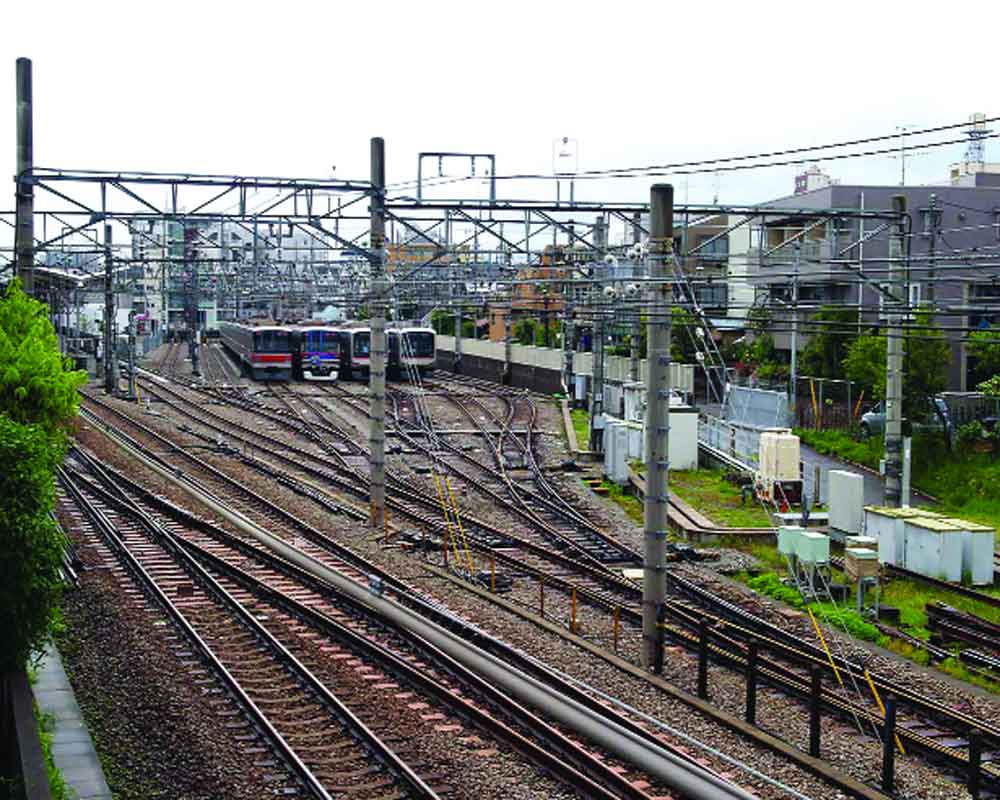Corporatise core railway ops for fresh capital, efficiency
The cost of logisticsin India is double or triple than in advanced countries. That makes India lose its export competitiveness and deems it a high-cost economy.This also invites “cost push†inflation mainly due to high dependency on road transport. The share of goods transported by railways has fallen from 86% in 1950-51 to about 29.5% in 2015-16. It might further reduce unless more rail tracks are built. For reducing logistics costs, railways must double its shareof goods trafficand improve efficiency in the next five years. Rail transport is supposed to be cost efficient, energy efficient and eco-friendly compared toroad transport. Its dependency on imported energy is also quite low.However, its potential is not yetfully exploited. Currently, the average speed of goods train is barely 24 kmph due to inadequate tracks and traffic congestion. Goods terminals have poor facilities for loading, unloading and storage; which adds to logistics costs. The railways don’t have an integrated model of road and rail transportation and modern storage for small consignments. Hence, dependency on the costlier road transport continues. In the past two decades, the capital investment inrailways has been less than a fifth of funds invested in the road sector. Railways profits are used up in subsidizing passenger fares, leaving a marginal surplus for capital investment. Considering the backlog, Railway needs new investment of about Rs 30-40 trillionin the next 5 years. This can’t be done with the budgetary sources alone and needs some financial innovations. Non-core activities in Railway must be hived off and rail operations split into six corporates individually dealing rolling stocks (wagons/trains), goods and passenger traffic, all engines (power) and workshops for repairs and maintenance, railway track and bridges, goods terminals and railway stations, and manufacturing plants for rail coaches and engines.
Railways assets, including the land and buildings, be suitably distributed among the six corporates. Such investment value may be treated as the Government’s contribution to the corporates as equity or debt and equity. About 10-20% equity may be divested to public through the stock exchange to ensure accountability towards public shareholders. Each corporate can raise funds for meeting its investment needs like any other PSU with the government providing sovereign guarantee. Surplus land and buildings and obsolete equipment and stores in each corporate should also be monetised for raising resources for new investment. However, land for expansion must be preserved. The corporates can bill one another for services sought or rendered. A regulator may be appointed for fixing tariff for goods freight and passenger fares. At an appropriate time private operators may be invited to compete with these PSUs. That will bring in additional investment and technologyand improve efficiency. However, traffic control must remain with a separate authority for monitoring the movement of trains. One of the corporates can develop existing terminals or build new goods terminalswith modern handling facilities to improve operational efficiency. Development of warehouses, cold storages attached to goods terminals will reduce the distribution cost and promote goods traffic. The aforesaid strategy will certainly augment ambitious investment, expand capacity and modernize railway that too, without any major budgetary support. Competition among private and PSU corporates shall gradually improve overall operating efficiency besides building capacity. Its impact shall be quite visible on the overall economic growth, logistics costs, inflation and exports. Dependency on the imported fuel shall also dilute. A fast and comfortable rail travel shall partially replace air traffic and promote tourism as well. Besides private sector, States should also join the team.This will indeed generate lot of goodwill for the government becauserailwaysis the most visible infrastructure.
(The writer is an economist and author. The views expressed are personal.)


























